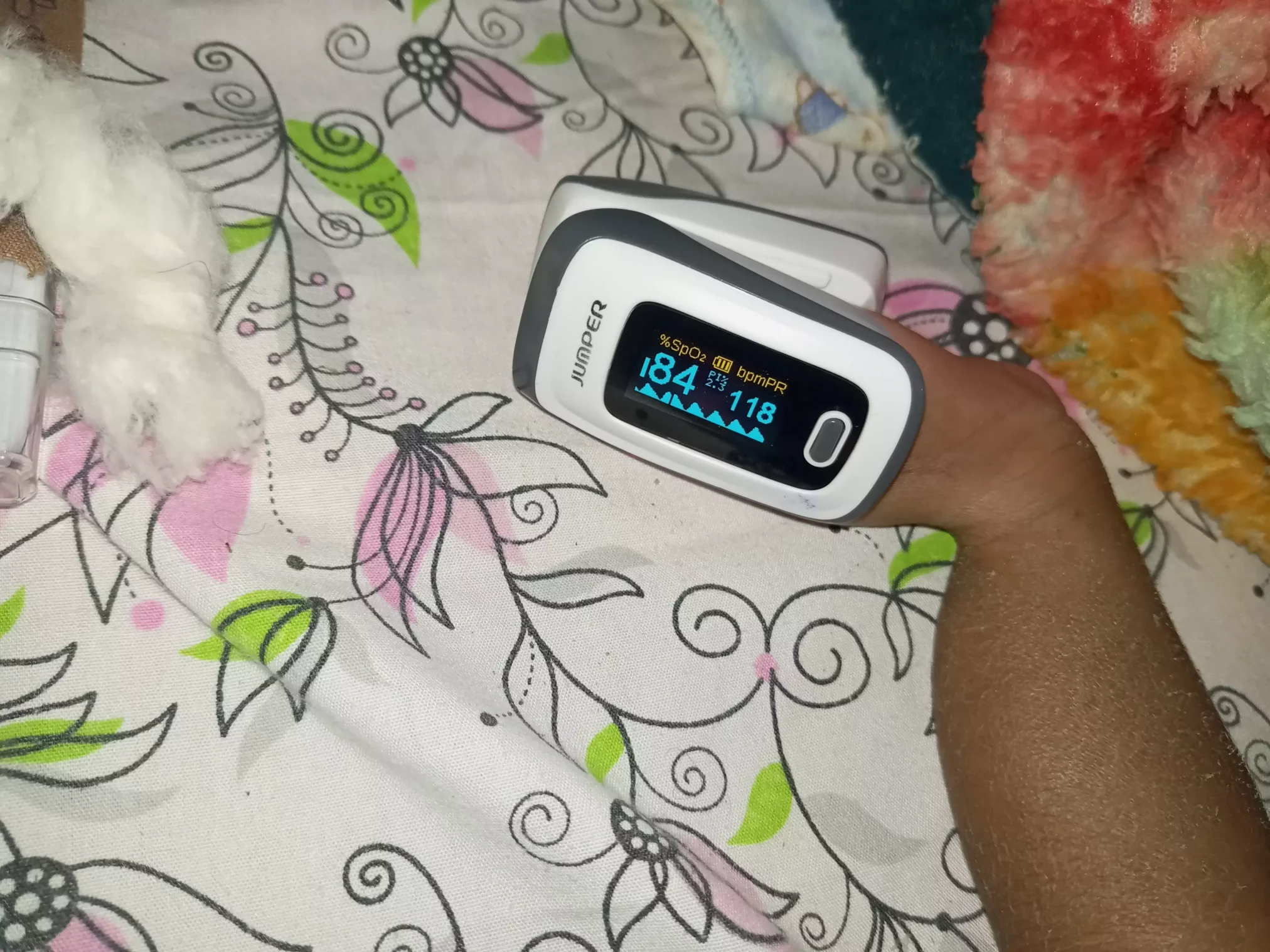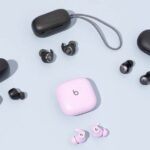“How to put a pulse oximeter on a baby’s foot?” This question is becoming popular among health workers in pediatric units and also among nursing mothers.
It is important to know how to put a pulse oximeter on a baby’s foot if you want to get the best value for the pulse oximeter. The major reason why many people use pulse oximeters to monitor the vital signs of their babies is to ensure that the babies have good oxygen saturation in their blood.
This is because good oxygen saturation also ensures that the baby is fine, has good air entry, and has a good quantity of oxygen within the blood.
A pulse oximeter is not only for nurses and doctors within the hospital setting. It is used in homes by those who know how to use it. Its use will be to monitor the oxygen saturation of their baby’s blood and ensure that their babies continue to live fine.
Anyone with a disease that affects the respiratory system or tries to decrease the level of oxygen that enters a baby’s respiratory system needs this pulse oximeter to continue to give good monitoring of the quantity of air or oxygen within the blood of their babies.
It is quite important and pertinent that every mother within the home knows how to make use of these pulse oximeters to check the oxygen saturation of their baby.
In this very simple guideline, I’ll be giving you expert exposure and a guide on how you can monitor the oxygen saturation of your baby’s blood using a pulse oximeter.

What is a pulse oximeter?
A pulse oximeter is a simple machine that is widely used in most hospitals to monitor the level of oxygen saturation in the blood of every human being, mostly cyanotic patients. Everyone who has blood in their system can make use of this machine. It is not exclusively for children. Adults can always use it to monitor their level of oxygen saturation and air entry into their system. Children with respiratory pathology can also benefit from its health importance, especially at the point when they are still neonates.
To make use of this device, you have to ensure that it comes in contact with any part of the body, such as the fingers or toes, to ensure that it can easily sense, using its sensor, the level of blood flow, especially the oxygen within this blood flow.
The importance of knowing the level of oxygen that is entering your system is very important for most women to continue to understand the best way to use this pulse machine. The good thing about this machine is that it can monitor other vitals, such as the pulse rate.
Continuous usage of this device to monitor the respiratory system will give you an indication of when to really see a doctor, though it is not advised to rely on such readings from someone who is not a health expert.

How to put a pulse oximeter on a baby’s foot?
How to put a pulse oximeter on a baby is a very simple thing if you can kindly go through this piece of writing that I’ll put out here. The main reason why I’m putting out this write-up is to help you continue to do it in the right way to ensure that you get the right value.
The best value for oxygen saturation of a baby using a pulse oximeter can always be gotten by a health expert, however, if you’re going to follow my advice, you are also going to get the best out of your pulse oximeter. To help you understand how to make use of a pulse oximeter, I’ll be breaking down the steps involved so that you can follow them accurately.
- Ensure your pulse oximeter has a functional battery: it is always important to ensure that your device has a good battery before you start making use of it and this will ensure that you have the best results you can always give. If the battery is not effective, you’ll see that it will be giving you a false signal, and even the signal that will be moving up and down will not be as strong as when the battery is really working well.
- Test it on yourself first: It is better to first confirm the functionality by testing it using your fingers or your toes before you can go ahead and test it on your baby. It will help to inform you about the accuracy of the expected results.
- Open the pulse oximeter and fix it on the foot: Now that you’ve tested and confirmed that you’re going to get accurate results from it, one of the first things you should do is open it up by pressing both of the edges, top and bottom, from one end to open the space that you are going to put on the foot or hand.
- Make sure that the toes of the foot are within the area where the sensor is: ensure that the toes are in touch with the place that has the sensor so that you can read the value of the oxygen saturation. There is no painting of the toenails to ensure that you get the best result.
- Allow it for 2 to 5 minutes: after fixing the pulse oximeter on your toes or fingers, you need to allow it to take 2 to 5 minutes so that its value or readings will stabilize and you can take the best reading. You can decide to repeat this more than three times and take the average reading as the best reading.
- Ensure that the signal on the pulse oximeter is moving in synchrony: Another way of confirming that your pulse oximeter is working well is to look at the signal that it is producing while recording the value of oxygen saturation on your baby. To do this, you need to look at the LCD section of the pulse oximeter, where it will display the signal and be moving in synchrony.
- Take your reading: when you’re sure that the reading is going in sync and that everything is in place, you are free to take your reading and rely on the reading to make your next consultation.
Why blood oxygen reader is important?
A blood oxygen reader is very important because it helps to tell us the extent of saturation of the blood with oxygen. It is a good pointer and quantifier of cyanoses. Aside from the bluish discoloration of the skin, you identify that someone is not taking oxygen in the right quantity just by using the blood oxygen reader to read the pulse oxygen level in the blood. This blood oxygen reader will also inform you on when to involve your intervention to boost the level of oxygen.
What does spo2 mean?
Spo2 stands for the saturation of oxygen within your blood. it tells you whether you have enough oxygen within your blood or not. When it is within the normal range, it means that you are breathing well and that the air is entering normally. However, if there is an obstruction at any part of your bronchial tree or respiratory track, the value for spo2 may be low.
What are the best pulse oxygen levels?
It is good to note that pulse oxygen levels vary among people. The value that raises concern where a neonate is may not raise an issue for an adult. With this, it means that there is a need to know the normal range or normal pulse oxygen levels. Pulse oxygen levels that are above 90% are good and should not ordinarily require one to put oxygen.
How to know the best oxygen monitor?
Oxygen monitors should be selected on the basis of what should be easy to use and able to produce reproducible results. These should form part of the reasons for your selection.
FAQs on pulse oximeter
Where is the best place to put a pulse oximeter?
The best place to put a pulse oximeter is anywhere near the heart, where the blood comes in with oxygen from the first contact. There’s nothing bad in putting your pulse oximeter on the fruit of your baby; however, I will advise and recommend that you put it on the hand of your baby, especially on the fingers. The challenge of using the fingers of your baby for measuring or monitoring this pulse oximeter is that you may experience your baby being hyperactive and then remove the pulse oximeter machine from his or her hand. Therefore, you may need to remove allies from their hands by getting them together and fixed at any time you want to measure the pulse oximeter reading using a pulse oximeter machine.
Why is a pulse oximeter needed?
if you’re hearing or seeing a pulse oximeter for the first time and you want to know why a pulse oximeter is needed, it is important to understand that the oxygen saturation of your blood is important at all times. The brain and other vital organs of the body depend on oxygen to perform at their best. Therefore, you need to ensure that anything that will reduce the level of oxygen intake in your system is reduced
Who needs a pulse oximeter check?
Well, every living thing needs a pulse oximeter; however, it is mostly indicated for those who are really in respiratory distress, such as those with pneumonia or respiratory system diseases, so that their blood oxygen saturation can always be measured and well monitored.
What can give the wrong results while using a pulse oximeter?
When you’re using this machine, a lot of things can contribute to or make you have the wrong Reading. First, it is important to understand that every wrong reason has its consequences. These are the things you need to avoid if you must make use of a pulse oximeter because it has to tell you the level of oxygen saturation and also get you informed whether your baby needs oxygen to be given intranasally or not. That can cause you to have wrong readings including not placing it well like getting their fingers all the toes to enter into the sensors. If your baby is hyperactive she can easily remove it from the finger or the toes where they are placed.
Where to place a pulse oximeter in a newborn?
A newborn is one of the people that really needs to know their oxygen saturation especially those that are born under stress and those that are delivered through emergency Cesarean section. In the hospital setting every baby that is delivered through Cesarean section or those that had delay in delivery usually undergo the screaming to ensure that their blood oxygen saturation is enough to carry them. Also, babies that do not cry at birth need to be checked to ensure that their oxygen-carrying capacity and oxygen blood saturation are good enough. Challenge me now when trying to check for where you put the pulse oximeter, especially in newborns. While any way you put it is always going to give you a result it’s left for you to know the best place to place it which may include the fingers(hand) or the toes(foot). The place you decided to place your pulse oximeter one of the best things you must ensure is to ensure that it’s reading and that the value you get out of it is accurate enough to help you make your decision.
Why pulse oximeter is not working?
There are many reasons why your pulse oximeter may not be working. It may be because there is painting on the toenails of your babe. It may also be due to wrong fixing of the machine. One thing is sure, when you try to take the reading from the foot of your baby, ensure to fix the machine when and up to the point where the sensor is. This will certainly help the machine to pick and display the right answer to you.

How to put a pulse oximeter on a baby’s foot? (Summary)
The importance of having accurate pulse oximeter readings can never be underemphasized because this will tell you when to start your baby on intranasal oxygen and when not to bother about the breathing of your baby.
What is important before you start making use of every pulse oximeter is to know how to use it most, importantly from the manufacturers. When you are able to get the manufacturer’s guidelines, you should also be able to know the best time and the best way to use it including the best place to place it. All these have been simplified in this write-up.
You can also follow the Trending Office blog to learn more about your health.





